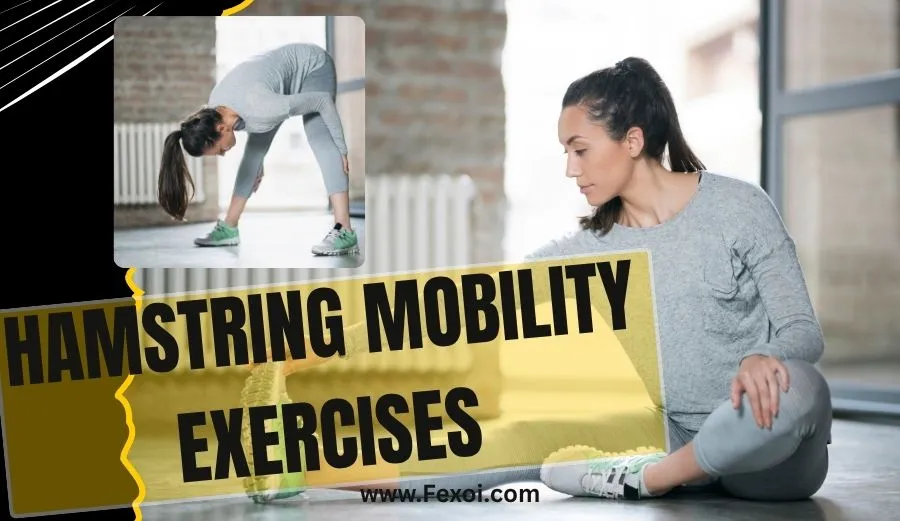What Are Hamstring Mobility Exercises?
Hamstring mobility exercises are a range of movements and stretches designed to increase flexibility, reduce tightness, and enhance the overall function of the hamstring muscles. These muscles, located on the back of the thigh, are critical for walking, running, and maintaining proper posture. Whether you’re an athlete, a fitness enthusiast, or someone experiencing stiffness from long hours of sitting, incorporating hamstring mobility exercises into your routine can greatly improve your physical well-being.
Why Hamstring Flexibility Matters
Tight hamstrings can limit your range of motion, making everyday activities like bending, squatting, or lifting more difficult. Over time, lack of flexibility in these muscles can contribute to back pain, poor posture, and increased risk of injury. Improving flexibility through consistent stretching helps maintain muscle balance and functional movement.
Anatomy of the Hamstrings
The hamstrings are made up of three muscles: the biceps femoris, semitendinosus, and semimembranosus. These muscles span from the pelvis to the lower leg and play a crucial role in knee flexion and hip extension. Tightness or imbalance in these muscles can negatively affect your posture and mobility.
How Tight Hamstrings Affect Performance and Posture
Tight hamstrings can tug on the pelvis, causing it to tilt backward and reduce the natural curve of the lower spine. This can result in discomfort or even chronic pain. Athletes with tight hamstrings are more prone to strains and tears, while non-athletes may struggle with poor posture and reduced functional strength.

Benefits of Regular Hamstring Mobility Work
Adding hamstring mobility exercises to your fitness routine brings a wide range of benefits beyond just increased flexibility.
Injury Prevention and Improved Range of Motion
Regular stretching can help reduce the risk of muscle strains, particularly in sports that involve sprinting or quick direction changes. A flexible hamstring allows for a greater range of motion, supporting smoother and more efficient movements.
Enhanced Athletic Performance
Flexible hamstrings contribute to better stride mechanics and lower body control. Whether you’re running, jumping, or lifting, improved mobility enhances performance while reducing fatigue and the likelihood of injury.
Reduced Lower Back and Hip Tightness
Stretches for the back of the thigh can also alleviate tension in surrounding muscle groups like the lower back and hips. This is especially helpful for those who spend most of their day sitting, which causes the hip flexors to shorten and the hamstrings to compensate.
Best Hamstring Mobility Exercises to Try Today
Including both dynamic and static stretches for the back of the thigh in your routine can significantly enhance flexibility and build strength. Here are some of the best stretching for hamstrings that you can start doing immediately.
Dynamic vs Static Stretches
Dynamic stretches involve moving the muscle through a full range of motion and are best used as a warm-up. Static stretches, where the position is held for a period of time, are more effective post-workout or during a cool-down to lengthen the muscle and improve flexibility.
Best Stretching for Hamstrings: Expert Tips
Boosting flexibility and minimizing injury risk takes more than just haphazard stretching—it requires targeted, consistent, and properly executed exercises. The best stretching for hamstrings involves consistency, correct technique, and strategic timing.
How Often Should You Stretch?
To improve hamstring mobility effectively, aim to perform hamstring mobility exercises at least 3 to 5 times per week. If your goal is injury prevention or increased flexibility, consistency is key. For athletes or people with especially tight hamstrings, daily stretching is even more beneficial.
Back thigh stretching exercises done regularly help maintain optimal muscle length and reduce strain on the lower back and knees.
Stretch Duration for Maximum Effect
According to physical therapy research, holding static stretches for 20 to 30 seconds, repeated 2 to 3 times per leg, is ideal. This allows the muscle fibers enough time to relax and elongate. Dynamic stretches—like leg swings or walking lunges—are better suited for warming up before workouts, while static stretches are best post-workout or during cooldowns.
Expert Quote
“Tight hamstrings are one of the most common mobility issues I see in both athletes and desk workers. A balanced program of dynamic warmups and static stretches can greatly enhance hamstring flexibility and reduce injury risk,” says Dr. Amanda Lee, PT, DPT, a certified sports physical therapist based in Chicago.
Incorporating both types of hamstring mobility exercises is what she calls the “stretching sweet spot.”
FAQs About Hamstring Mobility Exercises
Here are the most frequently asked questions related to hamstring mobility and stretches for back of thigh, answered for your clarity and confidence.
What are the best stretches for the back of the thigh?
Some of the best stretching for hamstrings includes:
- Standing hamstring stretch
- Lying single-leg hamstring stretch
- Downward Dog
- Seated forward fold
- Resistance band stretches
Each stretch targets specific areas of the hamstrings and enhances mobility throughout the back of the thigh.
How long does it typically take to improve hamstring flexibility?
Results vary, but most people see measurable improvement in 2 to 4 weeks of consistent practice. The key is to follow a structured routine and avoid over-stretching, which can cause strain or tears. With the right back thigh stretching exercises, you’ll likely notice increased range of motion in a month.
Are hamstring mobility exercises safe for beginners?
Absolutely. Most hamstring mobility exercises are low-impact and safe for all fitness levels. Beginners should start with gentle stretches, avoid bouncing movements, and focus on proper breathing. Consulting with a physical therapist or trainer can further ensure safety.
What’s the difference between flexibility and mobility?
- Flexibility is the muscle’s ability to lengthen passively.
- Mobility refers to a joint’s ability to actively move through its complete range of motion.
In simple terms, flexibility is about the muscle, while mobility includes muscles, joints, and surrounding tissues. To reduce injury risk and move better, you need both.
Final Thoughts on Back Thigh Stretching Exercises
Hamstring mobility exercises are more than just recovery tools—they’re proactive strategies to improve athletic performance, reduce pain, and enhance posture.
Key Takeaways
- For optimal results, aim to stretch 3 to 5 times per week.
- Mix static and dynamic stretches for full benefit.
- Consistency, proper form, and breathwork are essential.
- Always warm up muscles before deep stretching.
- Use props like resistance bands or yoga blocks if needed.
Adding stretches for back of thigh into your routine can make everyday movements—like walking, squatting, and sitting—more fluid and pain-free.
When to Seek Professional Guidance
If you’re experiencing chronic tightness, discomfort during stretching, or mobility issues that interfere with daily life, consult a physical therapist. A specialist can assess muscular imbalances, provide hands-on therapy, and tailor a routine with the best stretching for hamstrings for your unique needs.
Ready to Move Freely? Start Your Routine Today
Improved movement starts with action. Incorporate the hamstring mobility exercises shared in this guide into your daily or weekly routine. Whether you’re an athlete, a yogi, or someone who just wants to touch their toes again these back thigh stretching exercises are your foundation to more flexible, injury-resistant legs.
Start small, stretch smart, and move forward confidently.







